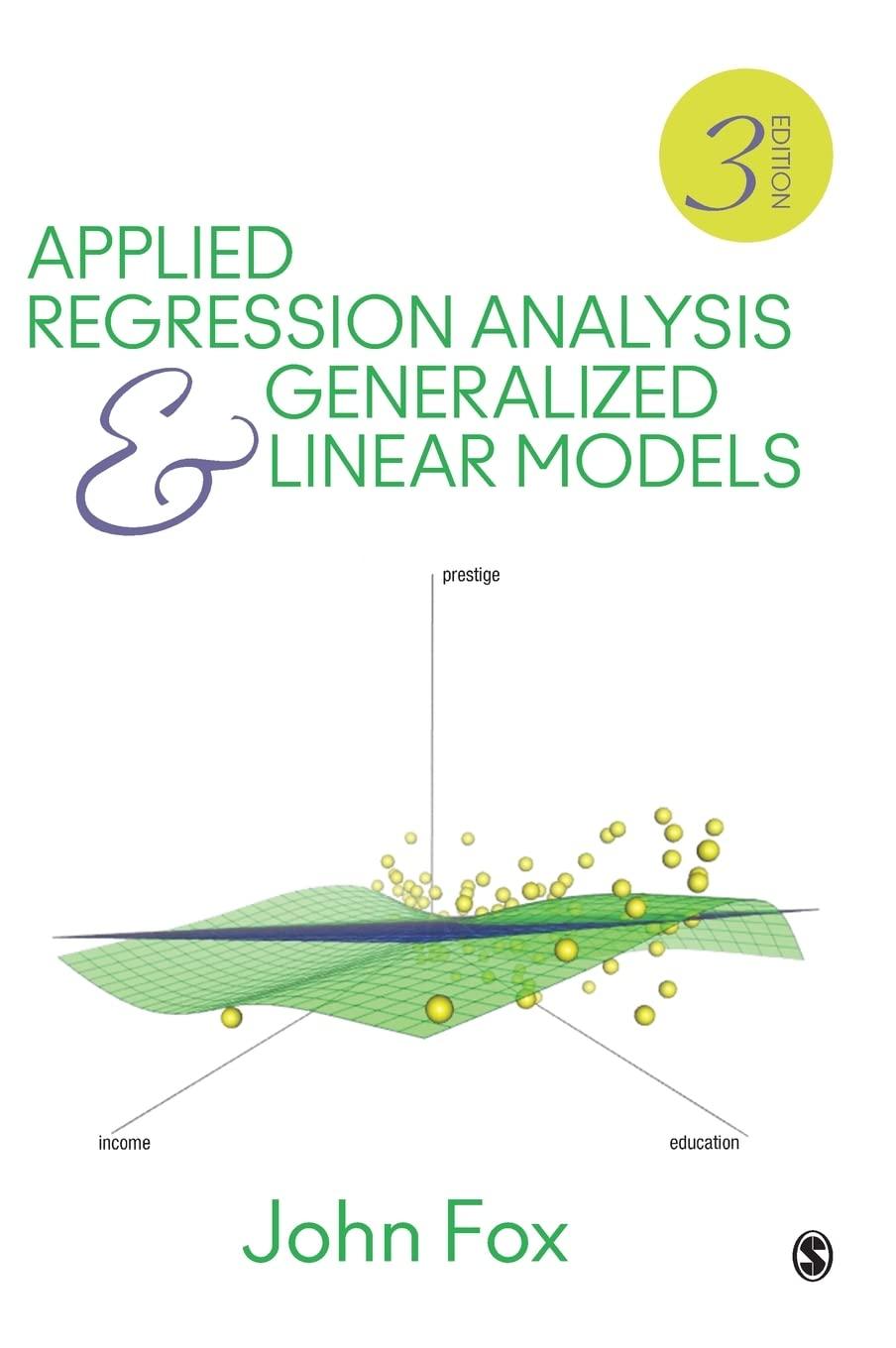Suppose that the true model generating a set of data is Y 1X1
Question:
Suppose that the ‘‘true’’ model generating a set of data is Y ¼ α þ β1X1 þ ε, where the error ε conforms to the usual linear-regression assumptions. A researcher fits the model Y ¼ α þ β1X1 þ β2X2 þ ε, which includes the irrelevant explanatory variable X2—that is, the true value of β2 is 0. Had the researcher fit the (correct) simple-regression model, the variance of B1 would have been VðB1Þ ¼ σ2
ε=
PðXi1 ' X1Þ
2
.
(a) Is the model Y ¼ α þ β1X1 þ β2X2 þ ε wrong? Is B1 for this model a biased estimator of β1?
(b) The variance of B1 in the multiple-regression model is VðB1Þ ¼ 1 1 ' r2 12
· σ2
ε PðXi1 ' X1Þ
2 What, then, is the cost of including the irrelevant explanatory variable X2? How does this cost compare to that of failing to include a relevant explanatory variable?
Step by Step Answer:

Applied Regression Analysis And Generalized Linear Models
ISBN: 9781452205663
3rd Edition
Authors: By John Fox





